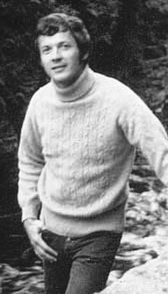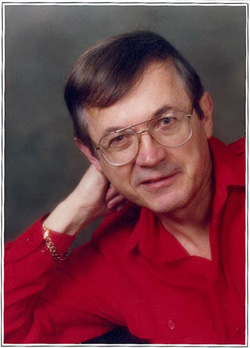 In Memory of John Alan Lee
In Memory of John Alan Lee
August 8, 1933–December 5, 2013
by Stephen O. Murray
December 15, 2013.
Longtime Journal of Homosexuality editorial board member and frequent contributor to it, John Alan Lee chose to end his life on December 5, 2013.
Born in Toronto on August 24, 1933, John Lee was passed through various foster homes as a child, and as an adult had a strong aversion to expectations of Christmas cheer.
After completing his undergraduate degree at the University of Toronto in 1956, John worked in a factory and became a trade-union (International Workers’ Association) staffer organizing and writing in Newfoundland and Ontario. As a dewy-eyed socialist Potemkin from the West, John traveled into the then generally closed and newish People’s Republic of China, and retained some nostalgic fondness for Maoist China. In 1964, John joined the Society of Friends (Quaker) and in the following decades was involved in helping US draft avoiders and deserters from the military trying to settle in Toronto.
His UT mentor, S. D. Clark, urged John to do graduate work in sociology, and John chose to do it in England, earning his Ph.D. in sociology from the University of Sussex. He had married in 1958 and sired a son and a daughter, before becoming the first gay male professional to go public on Canadian television (February 14, 1974). Always ready to theorize and generalize his own experiences, he wrote an article about “going public (Lee 1978b).

Promotional photo for Love’s Gay Fool
After we cofounded the Toronto Gay Academic Union in the autumn of 1975, I moved into a flat in a building he was renovating and would then move into. I argued against a category “going public” distinct from “coming out” in that they only differ only in the person having some celebrity or at least position to pique media interest (I would readily grant that John had ability and experience in getting noticed by Canadian media.)
At a time of lesbian separatism, gay male de-assimilation from heteronormative values, and considerable open sex with many partners, I (Murray 1979) wrote about emerging “gay community” and the growth in number and scope of gay institutions, while John (Lee 1979a) focused exclusively on the efficiency of gay male cruising for sex (including an article on connecting by want-ads in gay newspapers), and made “getting sex” the title of an ecological survey of gay male Toronto (though the city was not explicitly identified within the book) in Lee (1978a). [1]I have written about the UT gay studies milieu of the mid-1970s and the influence of UT sociologist Raymond Breton’s conception of “institutional completeness” (which, like “community,” I … Continue reading
John also rationalized/theorized what we would now call “risk reduction” within S&M encounters (Lee 1979b). He also continued the theorizing of what he eventually called “lovestyles” (1976a), having extended his typology of “colors of love” to “forbidden colors” (Lee 1976b), alluding to Mishima’s pathbreaking novel about homosexual relations in immediately postwar Tokyo. He remains the only practitioner of gay studies much influenced by “exchange theory” in general and Peter Blau’s version in particular. He also did some research on the dawn of romantic love (Lee 1977).
With frustrations of becoming invisible in gay cruising settings as he aged (despite the higher valuing of maturity in leather/S&M encounters), John guest-edited a special issue of the Journal of Homosexuality on gay aging (with some pungent, not-then-attributed comments from another sociologist (and anti-war activist) who left his wife and children to live gay, Laud Humphreys) in 1990, expanding upon ideas from a 1987 article.
John taught at the Scarborough campus of the University of Toronto from 1971–99, refusing for reasons I never understood to be promoted from (tenure) associate professor to full professor and acquiescing to being classified as an emeritus full professor a decade after he retired. I don’t recall him teaching any classes at the main/downtown (St. George) campus, where there were graduate students. His class enrollments and the content were sometimes controversial. His talent for securing publicity led to one of his irritated colleagues to label him in print a “media terrorist.”
His last crusade in a life he had not anticipated would continue fourteen years beyond retirement was “death with dignity,” and he would have been disappointed that the Globe and Mail obituary of him did not indicate his choosing to die when he felt the quality of his life had fallen too low.
Though refusing to use email, John had an abridged version of the diaries (the originals of which are in the Canadian Gay Archives in Toronto), begun when he was 22, posted on lines with various old photos and documents, as Love’s Gay Fool. It chronicles his romantic relationships more than his ideas (not that his life and his research could easily be distinguished from each other) and what he suggests is “probably hold[ing] a world record in advertising and blind dating: 1350 replies to ads screened by phone, and 271 men met in blind dates.” His efforts resulted in 30 affairs ranging from a few weeks to two years between the rancorous end of his longest-term gay relationship in 1991 and 2003. The number of requisite characteristics in a potential partner was so great as to make the probability of finding their combination de facto nil.
John Lee also did research on topics other than love and sex, including studies of faith healers and hypnotherapists, student cheating, and Royal Canadian Mounted Police misconduct.
References
Blau, PM. 1964 Exchange and Power in Social Life. New York: John Wiley and Sons.
Breton, R 1964. “Institutional completeness of ethnic communities.” American Journal of Sociology 70:195–205.
Lee, JA 1976a. Lovestyles. London: J. M Dent.
—. 1976b. “Forbidden colors of love: patterns of gay love and gay liberation.” Journal of Homosexuality 1:401–417.
—. 1977. “The romantic heresy.” Canadian Review of Sociology and Anthropology 12:514–528.
—. 1978a. Getting Sex. Toronto: General.
—. 1978b. “Going public.” Journal of Homosexuality 3:49–78.
—. 1978c. “Meeting males by mail.” Pp. 415–427 in Louie Crew, The Gay Academic. Palm Springs, CA: ETC.
—. 1979a. “The gay connection.” Urban Life 8:175–198.
—. 1979b. “The social organization of sexual risk.” Alternative Lifestyles 2:69–100.
—. 1987. “What can homosexual aging studies contribute to theories of aging?” Journal of Homosexuality 13,4: 43–71.
—. 1990. Gay Midlife and Maturity. Journal of Homosexuality special issue (20:3/4) also issued by Haworth Press in 1991.
—. 1991.“’Can we talk? Can we really talk?’: Communication as a key factor in the maturing homosexual couples. Journal of Homosexuality 20, 3-4:143-68.
Murray, SO. 1979. “Institutional elaboration of a quasi-ethnic community.” International Review of Modern Sociology 9:165–177.
—. 2012. Pieces for a History of Gay Studies. San Francisco: Instituto Obregón (e-book).
This article was also printed as
“Dr. John Alan Lee: In Memorium,” in the Journal of Homosexuality 62(1), Jan. 2015.
It is published here by permission of the author.

